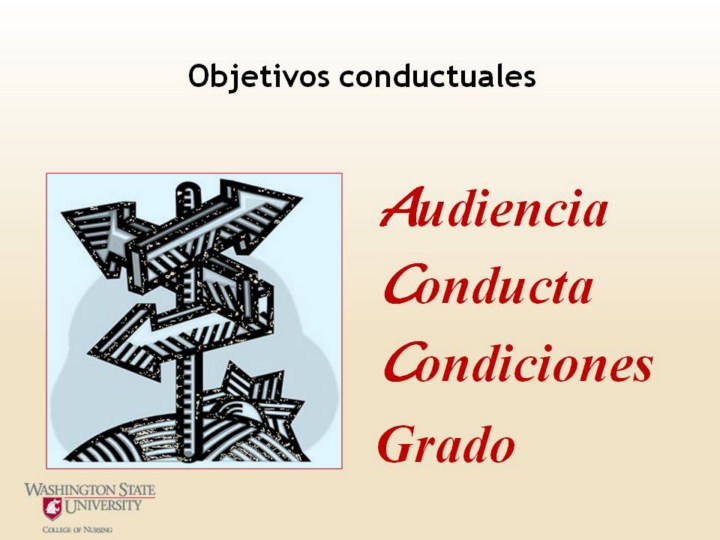| front |1 |2 |3 |4 |5 |6 |7 |8 |9 |10 |11 |12 |13 |14 |15 |16 |17 |18 |19 |20 |21 |22 |23 |24 |25 |26 |27 |28 |29 |30 |31 |32 |33 |review |
 |
Son
declaraciones comunican la intención de instrucción que describe una
propuesta, el cambio observable, medible en un alumno. Los objetivos también
describir los resultados en lugar de una descripción o resumen del
contenido. They are statements communicating instructional intent describing a proposed, observable, measurable change in a learner. Objectives also describe outcomes rather than a description or summary of the content. Audience- specifies who will perform the behavior Behavior- what the learner will do, know, feel, value or believe must be observable and measureable must be described using an action verb (i.e., choose, identify, pick, describe, match, assess, explain, compare, interpret, etc.) Conditions- where and/or when performance behavior will occur Degree- the standard or criterion for performance
Reference: Berry, L. (2002). From nurse to educator: Creating effective learning experiences for adults. Hartman Publishing: Albuquerque, NM.
Example:
Given the Braden Scale for Predicting Pressure Sore Risk, the student will be able to identify an older adult’s risk for pressure sores in their next clinical day with all items of the tool calculated and scored.
Audience- The student Behavior- identify an older adult’s risk for pressure sores Conditions- in their next clinical day Degree- all items of the tool calculated and scored. |